Environmental Issues
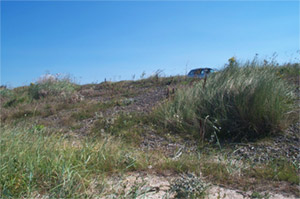
Frequently asked questions about bitumen, asphalt and the environment
- Will everywhere be black when you have finished?
- Isn’t bitumen full of carcinogens?
- Won’t asphalt pollute the water?
- Isn’t it more environmentally friendly to use natural materials?
The answer to all of these questions is an emphatic NO. The links below explain why, and give more information about bitumen, asphalt and the environment.
Information List
- Hesselberg Hydro, asphalt and the environment: an overview
- Bitumen is not toxic or polluting
- Bitumen, asphalt and drinking water
- Asphalt is a more environmentally friendly alternative to natural materials
- Nature and technology minimise visual impact
- Promoting biodiversity
- Materials recycling
- Bitumen and asphalt: environmental impact audit in summary
- Environmental Policy Statement

Hesselberg Hydro, asphalt and the environment: an overview
All aspects of Hesselberg Hydro’s work have environmental implications which may either fall within the aims of a project or be secondary consequences of it.
Environmental improvement is central to our work, notably:
- Management, protection and conservation of natural, semi-natural, agricultural and built environments, especially the control of flooding and erosion for coastlines, estuaries, flood plains and water courses
- Safe and reliable supply of drinking water
- Safe containment of domestic and industrial waste in landfill sites
Details may be found at Applications

Hesselberg Hydro and Environmental Impact
Our work on asphaltic installations may have secondary consequences, either related to a final structure, or to its construction.
Impacts may be positive, including:
- Encouragement of growth of local flora
- Reduction of rock extraction
- Blending of an installation with the environment
Impacts may be negative, including:
- Noise
- Traffic
Many of our projects have been completed in locations with protected status, such as Sites of Special Scientific Interest, where sensitivity to adverse environmental impact has been paramount.

Environmental Policy
In all projects – whatever their purpose – Hesselberg Hydro aims to maximise the environmental benefits of its work while keeping any potentially adverse impacts to a minimum.
In pursuit of those objectives, Hesselberg Hydro considers Environmental issues at all stages of a project from feasibility stage checks to risk assessments and method statements on site.
A copy of our Environmental Policy Statement can be viewed here: H&S-Policy-Statement.pdf
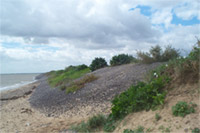
Bitumen Is Not Toxic or Polluting
Bitumen is not a health hazard, nor does it damage the environment.
Bitumen is not made from coal tar, and while both materials are black, the similarity ends there!
Bitumen is a petroleum product. In the refining of crude oil by fractional distillation, lighter fractions of the crude are drawn from the distillation tower at different levels (temperatures) leaving a residue at the bottom which is a complex mixture of high molecular weight hydrocarbons. This residue is further distilled at low pressure to produce the bitumen feedstock. Bitumen is mixed with mineral aggregate to produce asphalt.
Since the high molecular weight hydrocarbons in bitumen are not very reactive, the mixture is inert and it does not harm the environment.
The tar or pitch used as a road surface in the past is an entirely different substance made from coal. It is the coal tar products – not materials obtained from petroleum – that contain polycyclic aromatic hydrocarbons known to cause cancer.
Thus, bitumen in the environment does not present a health hazard.
To avoid any possible confusion, tar is NOT used in the production of asphalt.
Many studies have been undertaken to determine the type and concentrations of chemical compounds found in leachate after contact with asphalt. An example can be viewed here: LEACHING.PDF
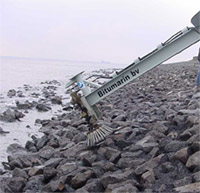
Bitumen, Asphalt and Drinking Water
The Drinking Water Inspectorate (DWI) is responsible for issuing approval for materials which come into contact with water intended for drinking in England and Wales.
Regulation 31 of the Water Supply (Water Quality) Regulations 2000 implements Article 10 of the Council of the European Union Drinking Water Directive (DWD) in England and Wales for all chemicals and construction products used by water undertakers, from the source of the water, up to the point of delivery to the consumer’s building. It sets out how approvals can be given to such construction products and materials that do not prejudice water quality and consumer safety.
DWI Advice Sheet 7 (December 2007) gives guidance on the approval process for ‘Construction products for water retaining structures in water collection, treatment and distribution systems’
Section 3.3 of Advice Sheet 7 reads as follows:
3.3 Construction products used in water impounding reservoirs before water treatment
When considering these products, including materials used to face the dams of impoundment reservoirs, water undertakers must ensure that they conform to the requirements for odour and flavour specified in part 2.2.1 of BS6930:2000 (or an equivalent European specification). Products listed in the Water Fittings and Materials Directory (WRAS) conform with these requirements.
When these materials and products are used in contact with untreated water intended for human consumption, conformity with the requirements of part 2.4 of BS 6920 (growth of aquatic micro-organisms test) is not required.
Note – products such as asphalt coatings used for upstream face erosion protection of dams were treated as traditional products under the requirements of Regulation 25(1) (c) of the Water Supply (Water Quality) Regulations 1989. A similar provision for traditional products is not included in the current Water Supply (Water Quality) Regulations 2000. DWI recognises that asphaltic products may fail to meet the test requirements of BS6920, Section 2.2.1 (Odour & Flavour of Water). They have recommended the following approach –
“Installation of asphaltic products on dams should be subject to a risk assessment by the water undertaker concerning possible leaching of polycyclic aromatic hydrocarbons and odour and flavour causing chemicals from the coating, and the ability and capacity of the downstream treatment process to deal adequately with the leaching of such compounds.”
Open Stone Asphalt and Mastic Grout have been tested to BS6920:2000 as follows:
| Section 2.2.1 – Odour & Flavour Test | Failed. See Note 1 |
| Section 2.2.2 – Appearance of Water Test | Passed |
| Section 2.2.3 – Cytotoxicity Test | Passed |
| Section 2.2.4 – Growth of Aquatic Micro-organisms Test | Failed. See Note 2 |
| Section 2.2.5 – Leaching of Metals Test | Passed |
Note 1 – Asphalt passed the original taste test in 1999 but the revised specification required a. Odour & Flavour ‘test. Asphalt failed as an odour could be detected in the water. Leachate water then underwent a GC-MS Scan protocol to determine what compounds were in the water which may cause the odour. The compounds found were in such small quantities that they were deemed to be insignificant.
Note 2 – As stated in Advice Sheet 7 this test is irrelevant for untreated water storage reservoirs.
Summary
Leachate water from fresh samples of asphalt do not contain significant levels of harmful compounds. Asphalt continues to be used on raw water storage reservoirs.
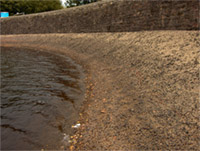
Asphalt is a more environmentally friendly alternative to natural materials
Hydraulic asphalt was developed for coastal defence in Holland – a country with limited rock resources, and excess bitumen from oil refineries around Rotterdam. Defences made from combinations of bitumen and sand, or bitumen and a relatively low amount of smaller rock were found to be as durable as those made from far greater volumes of rock alone. So, although driven by economic considerations, the development of hydraulic asphalt has helped the environment by reducing demand for rock and the attendant impacts of its quarrying and transport.
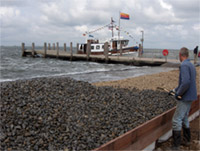
Nature and technology minimise the visual impact
When first placed, the black appearance of asphalt is less aesthetically pleasing than natural materials such as rock and timber. Generally, oxidation and abrasion of surface bitumen soon leaves the aggregate showing through which gives a more natural appearance. Surface dressing with a natural aggregate is possible if the appearance needs to be ‘non-black’ immediately.
The surface is usually protected with a seal coat of bituminous mastic or emulsion. However, it can also be covered with a cementitious product to help deflect the sun’s heat. This material also helps the lining to blend with surrounding rock, as at Winscar Reservoir.
- Cleaning Grouted Stone
The natural appearance of rock is retained by careful placement of mastic around the stones, or by cleaning the top of the rock with an excavator-mounted ‘brush’. - Open Stone Asphalt
Oxidation of the top coating of mastic soon dulls the surface, and after a year or so (less in exposed locations) the colour of the aggregate will show through. If a ‘non-black’ appearance is required immediately then surface dressing can be applied to the asphalt. The irregular surface voids that encourage growth of a wide variety of flora over the material helps the construction blend with surroundings.
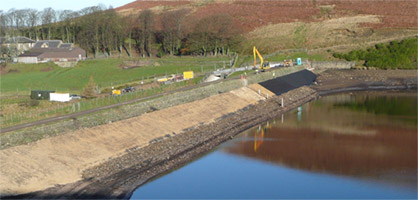
Promoting Biodiversity
Some materials, notably open stone asphalt (OSA) and asphalt reinforced geomats, are particularly good at promoting plant growth.
Growth of a wide range of plants is supported by OSA. Comparisons of different revetments in the same area have shown the irregular voids on OSA present more varied habitats than concrete blocks, for instance, where large, regular voids encourage only a few dominant species.
The open structure of geomats allows plants to grow through – vegetation cover, which forms rapidly, improves erosion resistance, and hence conservation of the plants.
Asphaltic structures with an open textured surface also provide areas for anchorage of algae and crustaceans.
Materials Recycling
All types of hydraulic asphalt can be re-used or recycled. The details depend upon the material’s structure
Overfilled Mixes (Asphaltic Mastic)
Mastic is either supplied hot in boilers, or as solid blocks which are re-heated on site. Any waste from site operations can easily be collected up and placed back in the boiler for re-use.
When a revetment is replaced, several properties allow the old mastic to be re-used very easily:
- Contamination is unlikely because of its dense nature
- When cold, the mastic can be separated from rock relatively easily
- Air and ultra-violet light cannot penetrate the mix so the bitumen will be as fresh as when it was placed, except on the mastic’s surface
- When heated, the mix returns to a fluid state because of the high bitumen content
If a different quality mastic is required, additional bitumen or aggregate can be added to the recycled material when it is re-heated – a mastic boiler mixes while it heats, so a homogenous material will be produced. Below 30% by volume the crushed stone component of mastic grout serves only to ‘bulk-out’ the material, reducing the amount of bitumen required – the stone has very little effect on mechanical properties of the mix. Thus, a recycled material – concrete, for instance – could be used instead of stone provided it was single-sized (no fines) of 10-15 mm grading.
Filled Mixes (Asphaltic Concrete)
Asphaltic concrete is compacted to produce very dense layers ( <3% voids ). Several properties allow it to be recycled:
- Contamination is unlikely because of its dense nature
- It is easily removed with either a standard planing machine or a powerful excavator
- Old asphalt can be recycled with new asphalt in a standard recycling plant, as is common for road asphalts. Usually, 20-30% recycled material is added to fresh material in the production process.
- Before recycling, large lumps (>20mm) must be granulated
- Fumes from re-heating in a drum mixer can be reduced by burning off in the burner flame, or alternative heating can be used, such as microwaving
- Asphaltic concrete planings not recycled in new asphalt can be used for general construction fill, or to make temporary access roads
Underfilled Mixes (Open Stone Asphalt, OSA)
These materials are highly open and porous with layers of aggregate (typically 40mm) coated by mastic to form a bound structure. The oldest revetments – built over thirty years ago – are still in service, so the recycling of material is in its infancy. To date, small scale trials show:
- Material can be removed relatively easily since it is separated from the formation by a filter layer
- Contamination of the open structure by soil, sand and vegetation is likely, so material must be washed and cleaned to leave just stone and mastic
- Material must be granulated into small units – clusters of a few stones only
- Cleaned, granulated material can be passed through a conventional recycling plant
- Alternatively, it can be upgraded by mixing with new aggregate, and re-coating with fresh mastic
Development of techniques for re-use of OSA will be of great environmental benefit where older defences require upgrading, and will also satisfy increasing demands for new installations to be built with sustainability in mind. The Dutch and Belgian authorities are keen to investigate the recycling of OSA. A successful trial project has been executed in The Netherlands.
Bitumen and asphalt: environmental audit in summary
| Production and processing |
Bitumen [Not directly under the control of Hesselberg Hydro, but included for completeness] Energy consumption (heating process) Particulate emissions to air Small amounts of air pollutants such as sulphur and hydrogen sulphide Visual impact of large refineries |
Asphalt Energy consumption (heating aggregates) Particulate emissions to air Noise, dust and fumes from plant, and aggregate handling |
| Transport | Asphalt or its components are generally transported to the construction site by road. It arrives either hot or as separate components which are mixed on site. The impact of transport varies widely from project to project, depending on remoteness of location, local availability of raw materials, and local processing facilities. | |
| Construction and Use |
Positive Constructions are thinner compared to rock or concrete so there is less excavation spoil Asphalt placements follow contours and go around structures without need for formwork or cutting of concrete blocks, so waste material is kept to a minimum Asphalt reduces exploitation of alternative resources – rock or concrete – which have greater negative impacts Materials can be recycled Can encourage growth of local flora Installations blend well with surroundings in time Installations, including reservoirs, river banks and coastal promenades have recreational value. Smaller voids of grouted stone revetments are less hazardous to pedestrians. Open Stone Asphalt has a rougher surface than concrete so is less slippery when wet or covered with algae |
Negative Noise nuisance from transporting and mixing materials Noise nuisance from transporting and placing plant Disruption to the local community by delivery traffic Carbon dioxide emissions from plant Energy consumption by plant Visual impacts both during and after construction |




